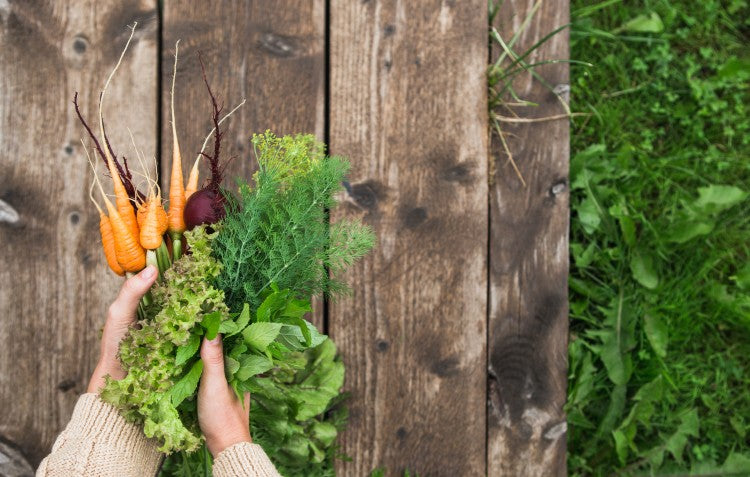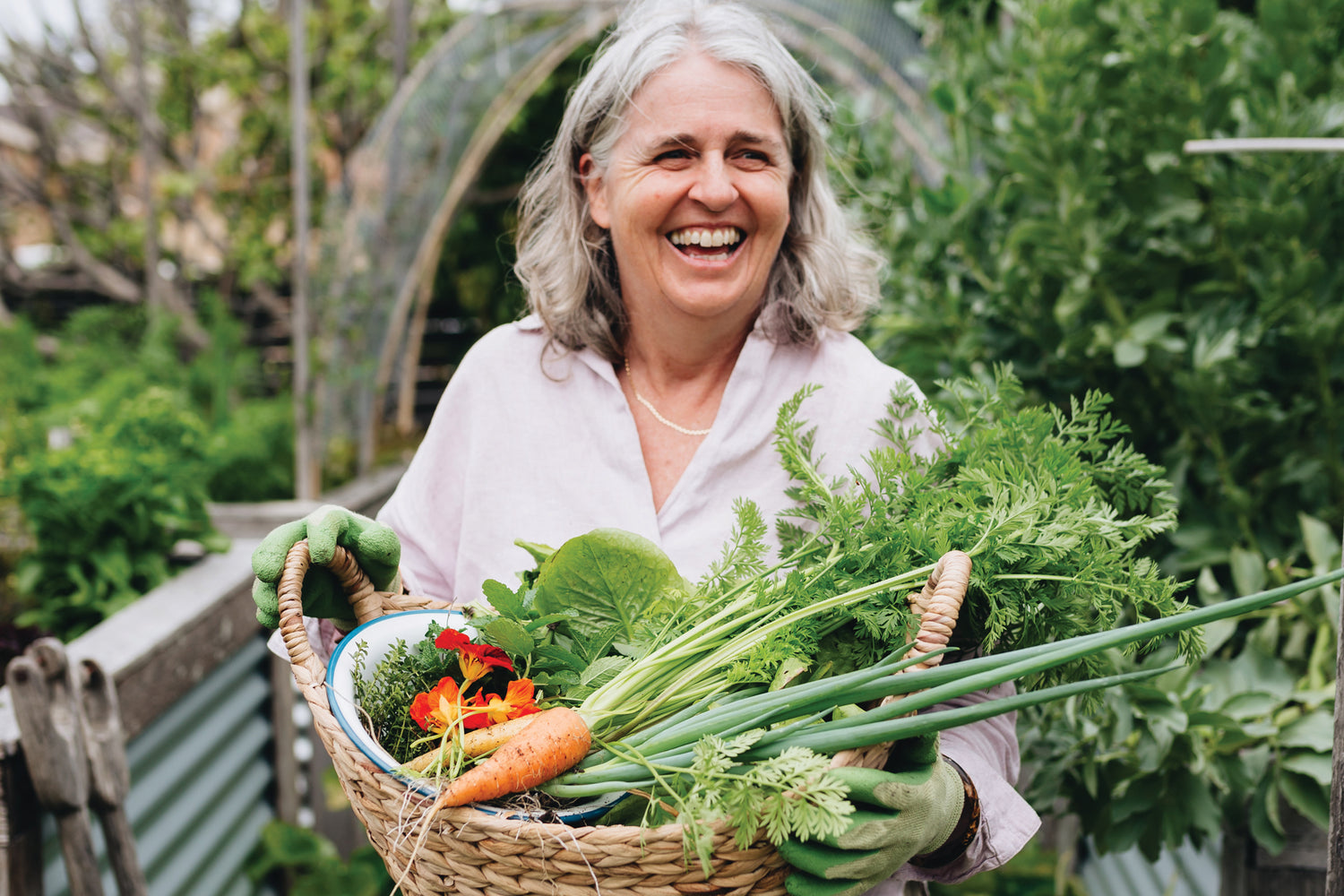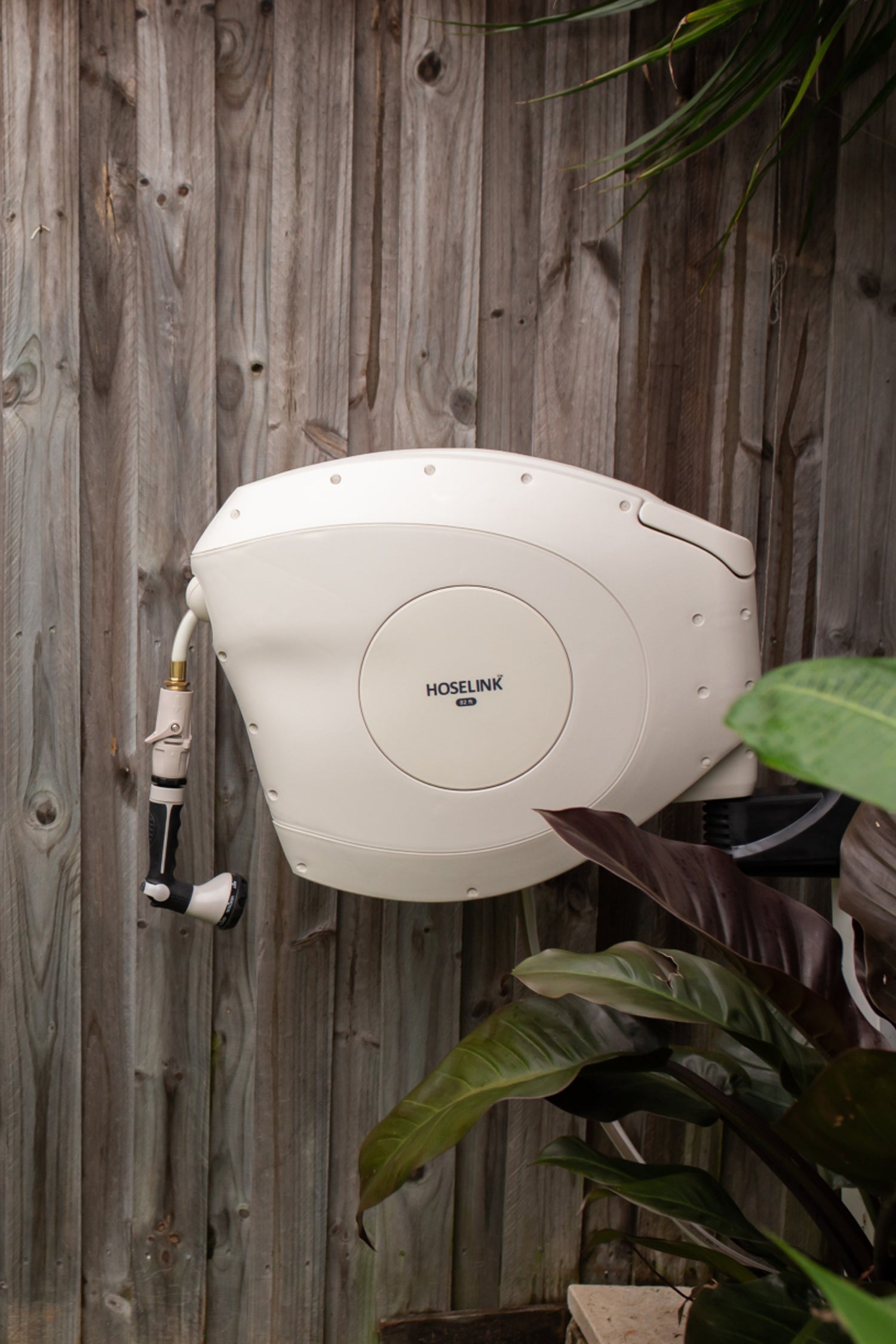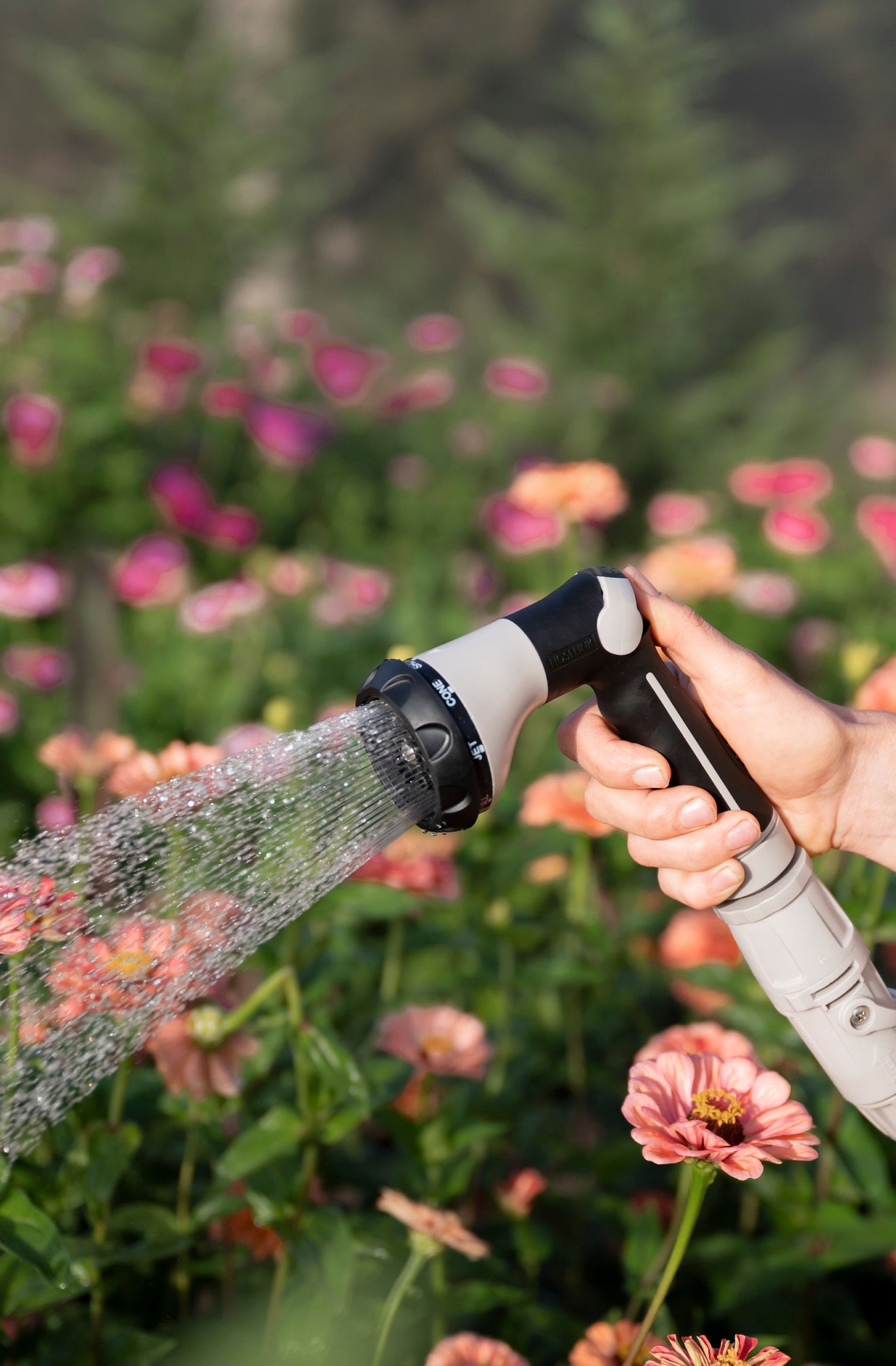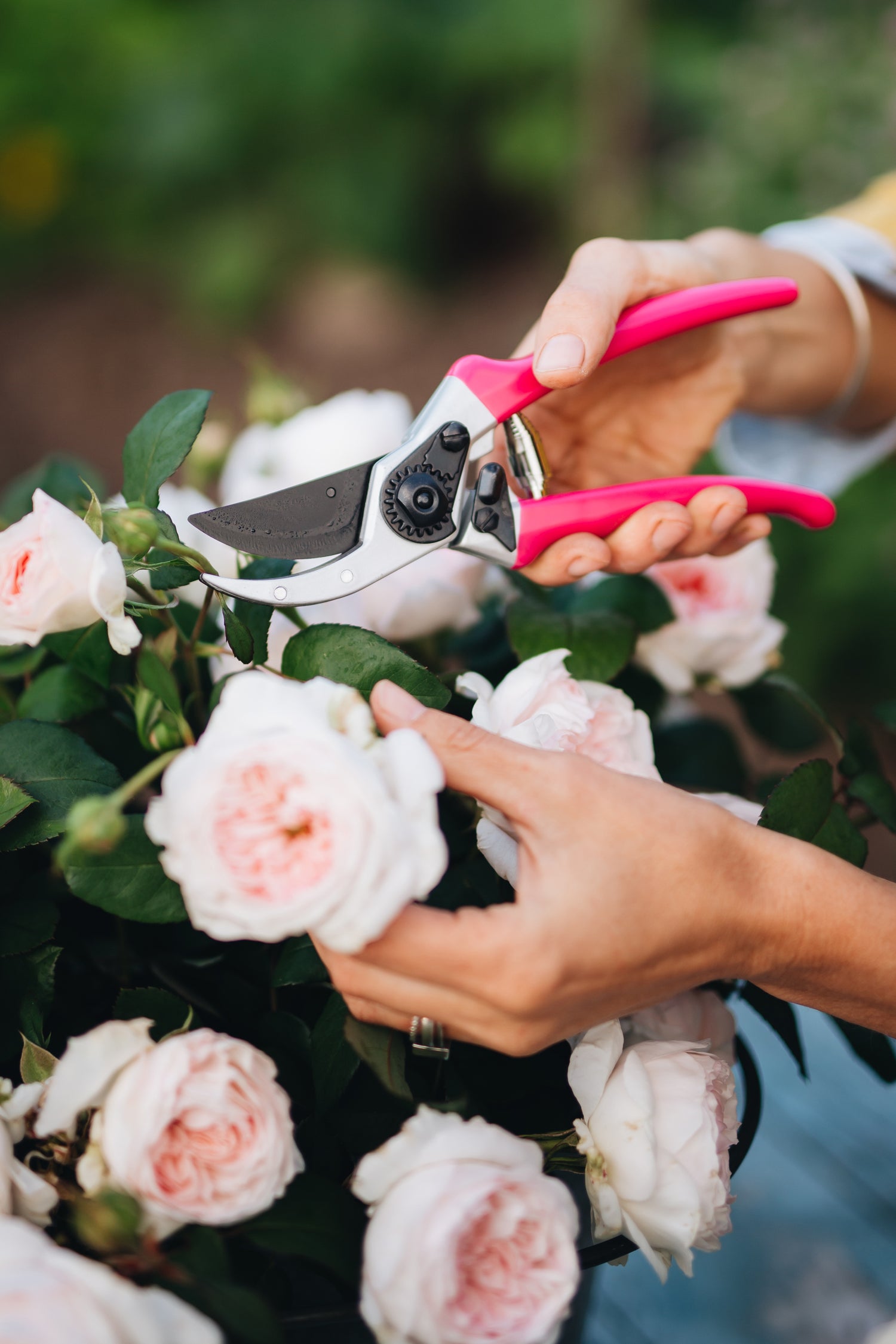Veggie patches are a great excuse to get outside and teach not only yourself but your kids about gardening and growing your own food. While it may seem daunting at first, our beginner’s guide is sure to help get you on the right track, so you’ll be eating homegrown goodies in no time.
Getting started
The first step in establishing your veggie garden is choosing a location. Whether you opt for a raised bed, containers or planting directly in the ground, choose a location that offers your garden at least six hours of sunlight per day. If your outdoor space only offers partial sunlight, don’t worry; many vegetables and herbs can grow in part sun, part shade. If you plan on growing any tall or climbing plants in your garden, ensure they don’t create too much shade for the other edibles growing around it.
The next step is to plan out what you’ll grow. You should choose edible varieties based on the growing conditions you can offer. And, it may sound silly, but only grow what you’ll actually eat as you don’t want anything to go to waste! Once you have selected your desired location and you have a plan of what to grow, you will be able to decide which container or space you want to plant your vegetable garden in.

Containers, raised garden beds and the ground
There are several options when it comes to growing veggies. Choosing the right option for you and your outside space is very important, and there are pros and cons to all options. If you are likely to move to a new house, renovate, or if live in an apartment it may be more realistic to have containers for your veggies as they are relatively easy to transport, rearrange and move around. If you do, however, have a large space or an area to plant directly into the ground, this may be the better option for you. There are several raised garden bed options available on the market too, although it is also possible to create your own using old or second-hand sourced materials such as timber or pallets for a more cost-effective veggie patch.

Easy edibles for beginners
Bell peppers
Bell peppers are a great staple vegetable that are very simple to grow and incredibly versatile in the kitchen. Delicious raw or cooked, bell peppers require full sun and are edible at almost any stage, making it hard to go wrong!
Lettuce
Lettuce is one of the simplest things you can grow as a beginner gardener. There are many varieties of lettuce and salad leaves on the market, many of which regrow quickly when cut, helping them last through much of the year. Lettuce is happiest when grown in full or partial sun.
Green beans
Even if your soil isn’t as up to scratch as you’d like, green beans will grow anyway!
If you live in a cooler area, snap beans are best for this type of climate. If you live in a hotter part of the USA, lima beans or Southern peas are the way to go.
Carrots
Carrots are ideal if you live in a cooler climate. These delicious root veggies thrive in loose sandy soil and can tolerate frost if your backyard is prone to a cold snap.
Kale
If you’re looking for some easy and versatile produce to grow, kale is the way to go. It is perfect for almost any climate and temperature range and can be harvested several times a year. I even gets a bit sweeter with some frost!

Planning and basics
In the planning stage, you need to consider how close your veggie patch is to a source of water. If your current hose doesn’t reach, you may want to invest in a Hoselink Retractable Garden HoseReel for fuss-free watering. You should also consider how many varieties you will have growing per season and plan accordingly. You don’t want your veggie patch to be overcrowded and compromise on quality. Start out simple with two to four vegetable types and get used to your new set up before adding more. Plant intensively; this means planting crops closely but in limited varieties to allow enough room for growth. This will ultimately leave you with less mulching, weeding, and watering to be done.
Considerations
Soil will feed your veggie patch the nutrients it needs to flourish; therefore, it is an important consideration for your veggie patch. There are plenty of premixed soils available, although it can be cheaper in the long term to create your own enriched mixture and work on balancing out the ingredients. If you do make your own soil, be sure to fill it with plenty of organic material such as decomposed leaves and shredded bark.
Fertilizer is key for a truly thriving veggie patch. Fertilizers help to consistently nourish your plants. Even if you have organic matter in your soil, you would be surprised how quickly it is diminished!
Care and maintenance
Caring for your veggie patch in the long term will require an eye of detail to see how your produce is fairing. You may notice pests invading your veggie patch over time, which, unfortunately, is a common issue and may require some patience before it is resolved. Read carefully when researching and find the correct treatment to control your pests. Ensure you don’t over-fertilize your garden. Whilst fertilizer is important, over-fertilizing can quickly cause your produce to become smaller in size. Lastly, take advantage of using mulch. Mulch has excellent insulating properties and will promote a healthy veggie patch. Make sure you check the ingredients of your mulch to avoid accidentally giving your veggies harmful chemicals.
Essential equipment
Apart from the obvious watering equipment, you may also wonder what else you’ll find to come in handy when starting a veggie patch.
Secateurs will be perfect when it’s time to harvest. These are heavy duty and ultra-sharp, making it super easy for you to harvest your produce. Furthermore, if you are prone to forgetting to water your garden, a sprinkler or irrigation system could come in handy. Hoselink has a great selection of sprinklers that suit any size garden or veggie patch. Sprinklers can assist in the prevention of over-watering and ensure that every surface is covered.

Recipes for Inspiration
Once your veggie patch is thriving, you may want to harvest some produce and create some tasty meals for the family to enjoy.
Here are some recipes to provide you with some inspiration to get cooking!
- Homemade pizzas
You can throw almost anything on a pizza; your veggie garden is sure to provide some delicious ingredients for a flavourful new twist.
- Pan-fried green beans
Pair your green beans with some caramelised onion and creamy mushroom sauce for a taste sensation!
- Italian tray bake
If you need a winter warmer, try slicing up tomatoes, zucchini, eggplants, and any other vegetable from your patch. Put them in a baking dish with some olive oil and fresh herbs to make the perfect side for your meal.

There you have it, our beginner’s guide to creating your own veggie patch, now all that’s left is to do is get outside and get gardening!

